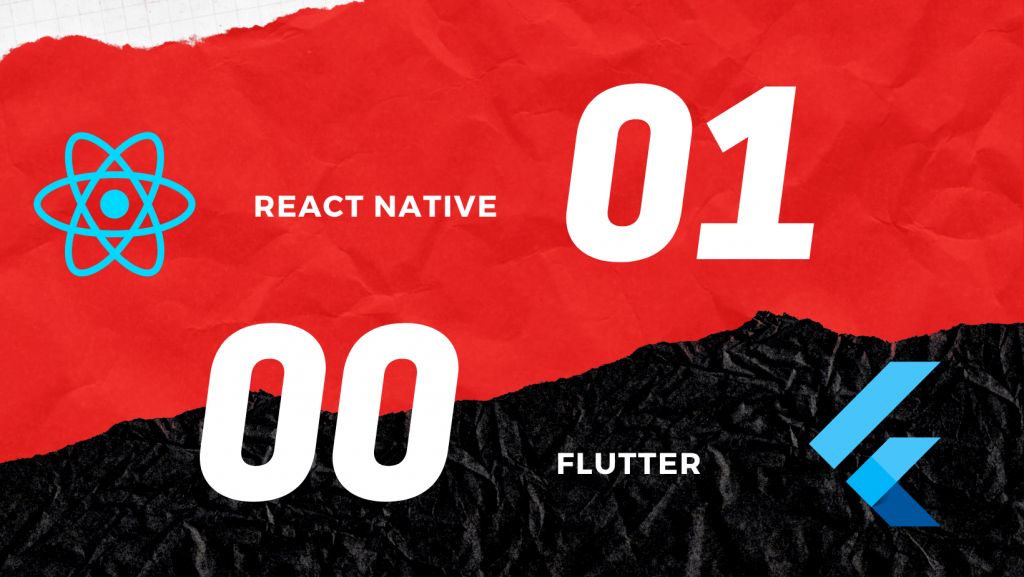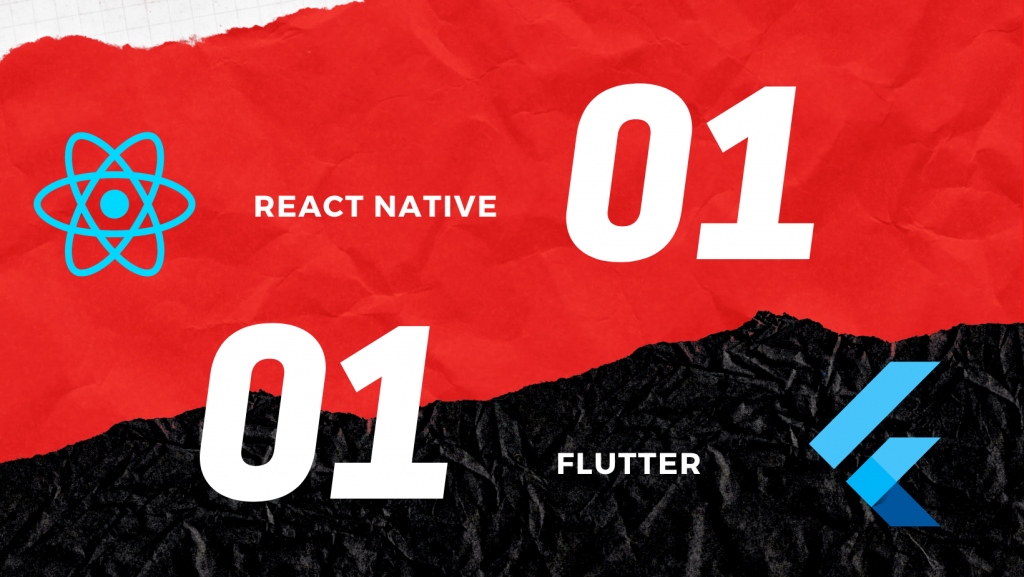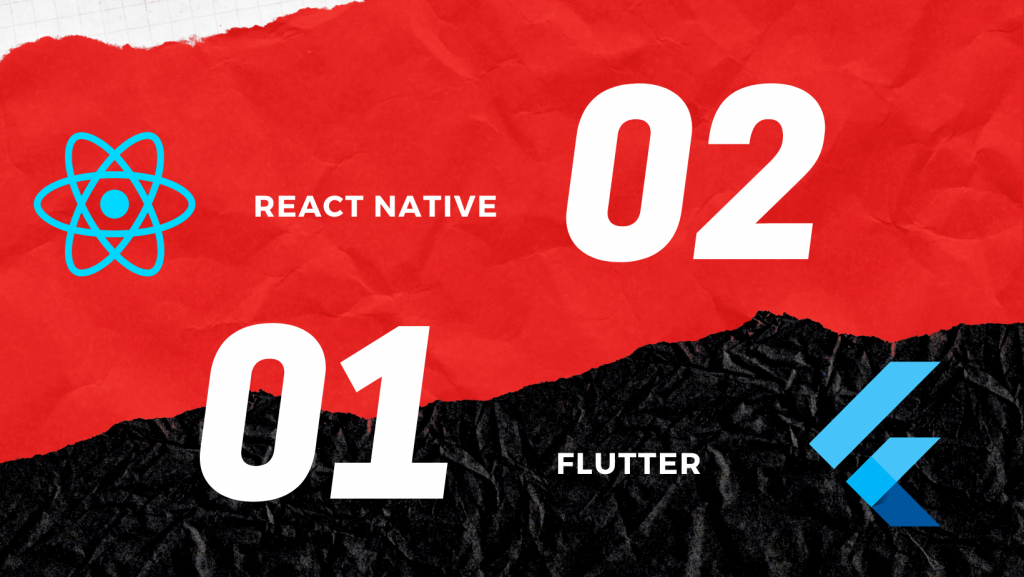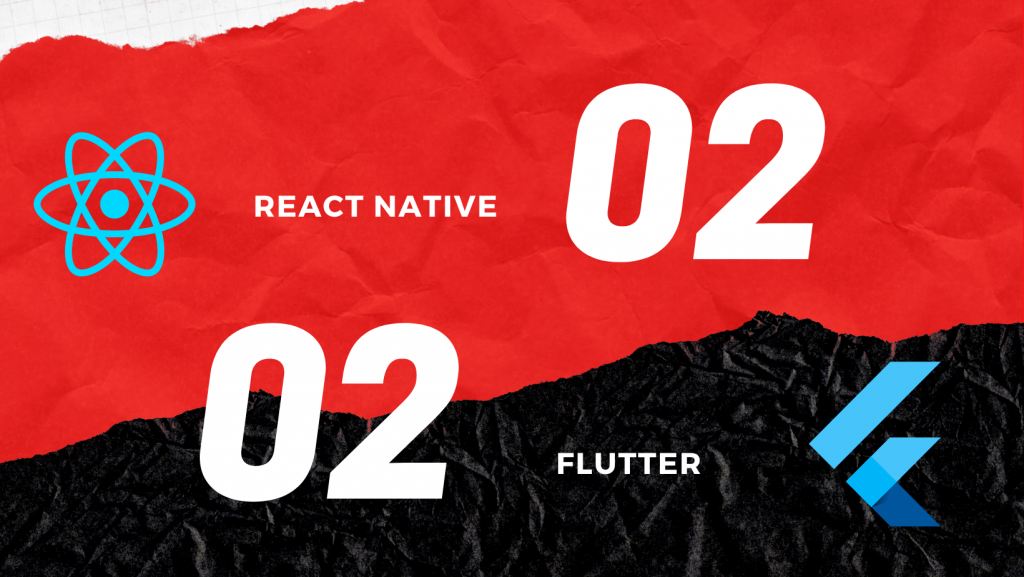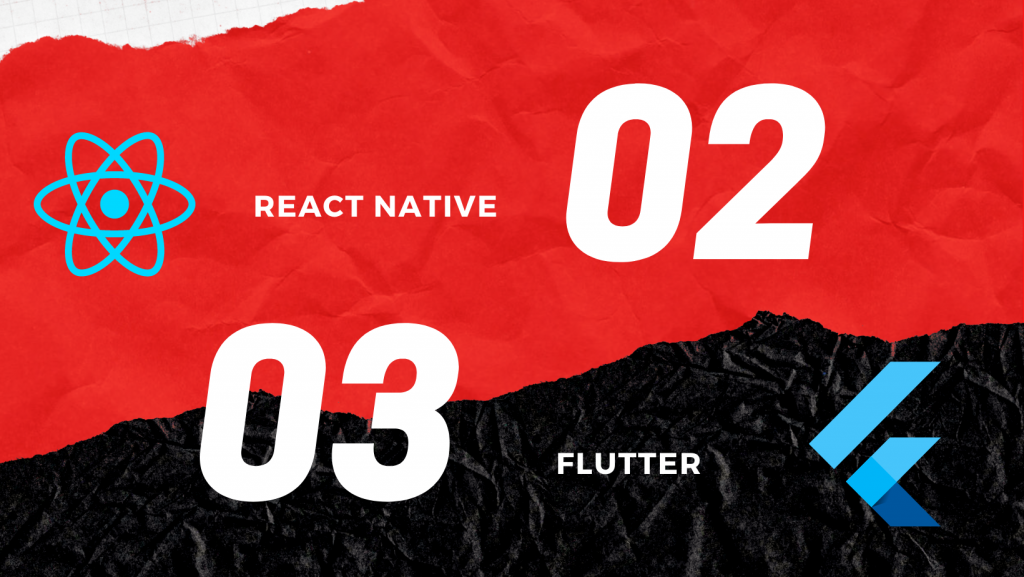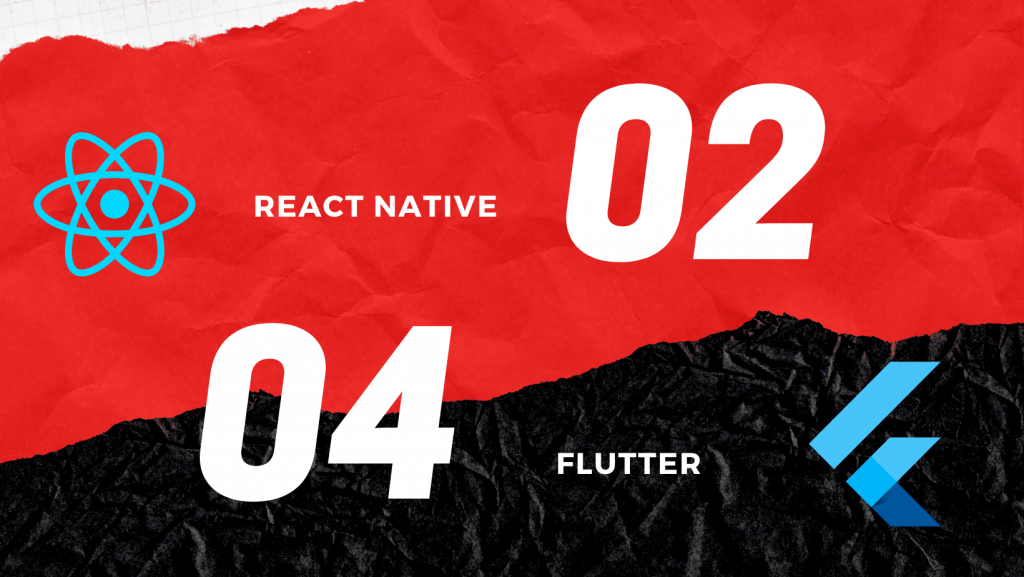Flutter vs React Native: What to Pick in 2020?
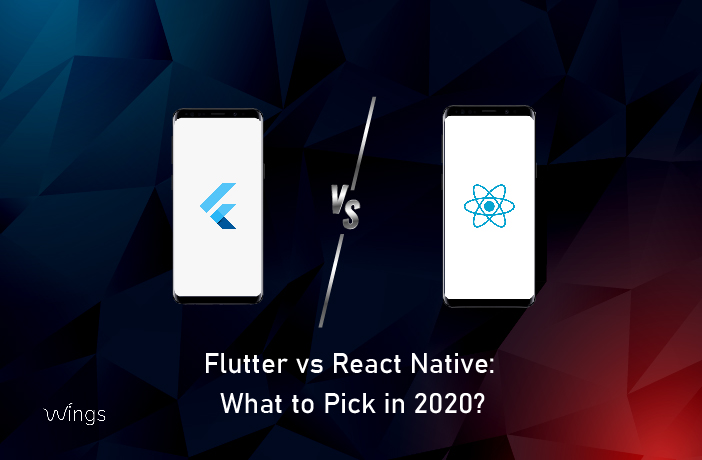
Since the usage of mobile devices has increased, mobile applications have taken their gear in every smartphone. This is the reason, it has enabled mobile app developers to develop such an app that runs seamlessly across all the platforms – iOS and Android. When considering what to use for your next mobile app development, that would cost you higher and consume time as well. Thus, cross-platform mobile app development has gained popularity as it allows you to develop mobile applications that run on more than one platform.
In 2020, there are a plethora of frameworks to choose from but Flutter and React Native are the two fledgling technologies in the industry. Undoubtedly, both cross-platform frameworks have their benefits and limitations at the same time. React Native is a top dog of the industry, while Flutter is a rising star. Just React Native is used by Facebook and Flutter is used by Google but still, you are not sure which framework would work better for project development. The goal of the developer is to code only once to make an application that will be available for iOS, Android, Web, see Windows 10.
Will help you to make the best decision, we are going to split off the comparison between Flutter Vs React Native in this blog. Since we have two giant players in multi-platform development – Flutter UI and React Native. Let’s see Who will rule the future market?”, and “ Which cross-platform app development framework is the best to pick in 2020?”
Showdown Time
What’s React Native?
React Native is an open-source framework for cross-platform mobile development created by Facebook in 2015. It targets Android, iOS, Web, and UWP. React Native is based on JavaScript, enabling developers to frame one codebase for Android and iOS to create applications. React Native allows developers to use the power of React coupled with various functionalities of each platform, integrating the desired features seamlessly. It’s trendy having 81k stars by coders and has a large community.
The apps made with React Native include Facebook, Skype, Wix, Pinterest, Bloomberg, Tesla, etc.
What’s Flutter?
Flutter is one of the leading open-source cross-platform mobile app development frameworks in the industry today. Flutter is an open-source UI software development toolkit created by Google in 2017. Flutter is celebrated for its ability on natively compiled mobile apps, web, and desktop apps, all from one codebase. Flutter uses Dart language along with multiple languages and high-level characteristics. Since Flutter is a new and young framework, GitHub showcases Flutter as a 74k starred framework.
Many big companies like – Alibaba, Hookle, Topline, OfflinePal, Hamilton, etc have used the Flutter framework.
Let the battle begin to React Native vs Flutter!
1. Programming Language
React Native — JavaScript
React Native uses JavaScript to build cross-platform apps. JavaScript is extremely popular amongst the developer community. Web developers can build mobile apps with a little bit of training because JS developers are usually familiar with the React framework, which shares many features with React Native. This is why many companies have adopted React Native for their development.
Flutter — Dart
Flutter uses Dart programming language created by the Google team and is rarely used by developers. Dart syntax is easy to understand for JavaScript or Java developers as it supports most of the object-oriented concepts. Even the syntax is very similar to Kotlin, Swift, and Java. Flutter even provides easy-to-follow documentation for developers switching from React Native to Flutter on its official website.
Verdict: A Point For React Native!
The programming language alone doesn’t make the toolkit. In fact, architecture is arguably more important. React Native is a more familiarized framework among developers as it is based on Javascript, whereas Flutter is based on Google’s in-house Dart language. So, we should consider React Native as a winner in this programming language category.
2. Technical Architecture
React Native — Flux
React Native architecture is quite reliable on JavaScript environment architecture, that’s also known as JavaScript bridge. The code of JavaScript is compiled into native code at runtime. In terms of development speed and productivity when it comes to cross-platform applications, React is definitely better than using native tools. React Native uses the Flux architecture from Facebook. This bridge can impact performance–especially if the user accesses UI elements frequently in a short period of time.
Flutter — Skia
Flutter uses the Dart framework which has most of the components inbuilt so it’s bigger in size and often doesn’t require the bridge to communicate with the native modules. Skai C++ engine is used by the Dart framework which consists of protocols, compositions, and channels. The wide range of offered functionalities in Flutter typically removes the necessity for developers to turn to other technologies to build their apps. Flutter has everything needed for app development in the Flutter engine itself.
Verdict: A Point For Flutter!
Now you definitely have an idea about better architecture after going through the comparison. React Native uses a JavaScript bridge to communicate with native modules, which results in poor performance. On the other hand, the Flutter engine consists of most of the native components in the framework itself. It doesn’t require any bridge to communicate with the native components. So, we should consider Flutter as a winner in this Technical Architecture category.
3. Developer Productivity
React Native
React Native is a very easy-to-use cross-platform app development if the developer is experienced and has a good knowledge of JavaScript. React Native has a hot reload feature which saves a lot of developer time while testing the changes in the UI. When it comes to IDE support, developers can use any text editor or IDE of their own choice.
Flutter
Flutter also offers the Hot reload feature. When the compilation time on Flutter is shorter as compared to React native. However, at a certain point, developers would need to learn and adopt the new Flutter concepts. Mainly Dart is not a common programming language and there is a lack of support for it in many IDEs and text editors.
Verdict: A Point For React Native!
React Native has been in the industry for many years and it has great developer support in terms of IDEs and language features. But on the other hand, Flutter is new compared to react Native. But It’s growing, we can say that. So, we should consider React Native as a winner in this Developer Productivity category.
4. Native Components
React Native – Less Components
React Native provides the essential elements to develop an app, namely, UI rendering capabilities, and device API access. For other functionalities, including accessing native modules, React relies on third-party libraries. The React Native components may not behave similarly across all platforms. This makes the apps inconsistent. User Interface rendering is available.
Flutter – Rich in Components
Flutter comes with numerous UI rendering components, device API access, navigation, testing, stateful management, and loads of libraries by the Flutter frame’s visual engine enhancements. This rich set of components removes the need to use third-party libraries. Flutter also has widgets for Material Design and Cupertino that allow developers to easily render the UI on both iOS and Android platforms.
Verdict: A Point For Flutter!
As you see that React Native is dependent on third-party libraries whereas Flutter has rich components. Here you can see a clear winner. So, we should consider Flutter as a winner in this TNative Components category.
5. Testing Support
React Native
React Native is a JavaScript framework and there are a few unit-level testing frameworks available in JavaScript. React Native framework does not provide any support for testing the UI or the integration. Third-party tools like Appium and Detox are used for testing the React Native apps. No official support is provided for these tests.
Flutter
Flutter provides a rich set of testing features to test apps at the unit, widget, and integration levels. The Flutter testing features are properly documented and officially supported. Flutter has great documentation on testing Flutter apps. Flutter offers a cool widget testing feature, with the help of that you can create widget tests to test the UI and run them at the speed of unit tests.
Verdict: A Point For Flutter!
The React Native community has no official support for integration and UI-level testing. On the other hand, Flutter has great documentation and a rich set of testing features. So, we should consider Flutter as a winner in this Testing Support category.
6. DevOps And CI/CD Support
Continuous Integration and Continuous Delivery are important for apps to get feedback continuously.
React Native
React Native doesn’t have any official documentation on setting up CI/CD. Unfortunately, only manual deployment for Google Play is documented. To automate your delivery and deployment, you must use a third-party solution, such as Fastlane or Bitrise. There is an article that explains the process of setting up CI/CD for React Native apps with Nevercode.
Flutter
The DevOps lifecycle is set up for Flutter. Flutter edges React Native in terms of DevOps and CI/CD support because of the official CI/CD solution. Flutter has a well-documented guide for building and deploying both iOS and Android apps. You can deploy your application simply by using CLI. Nevercode has inbuilt support for CI/CD for Flutter apps.
Verdict: A Point For Flutter!
Over here as you see React native doesn’t provide any official instructions for CI/CD. On the other hand, Flutter apps are easy and painless to set up on CI/CD services by using its strong CLI tools. So, we should consider Flutter as a winner in this DevOps And CI/CD Support category.
Conclusion
Both Flutter and React Native are incredible frameworks that can help you build a cross-platform application faster and easier than with the majority of native tools. In the React Native vs. Flutter battle, there are no winners or losers. Each framework has strong and weak sides. We hope the blog React Native vs. Flutter draws the appropriate comparison and helps you choose the best cross-platform framework for your project. Do you want to develop your apps with more agility? And to reduce costs with cross-platform development – Who doesn’t? Then drop a line of the message and will be back within 24hrs.

